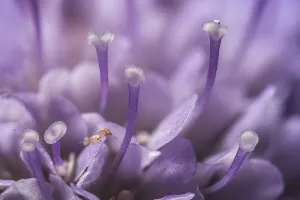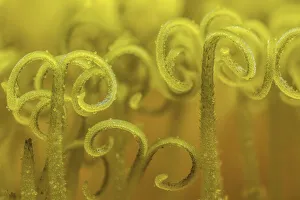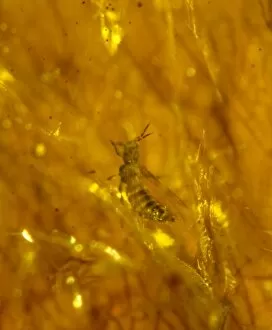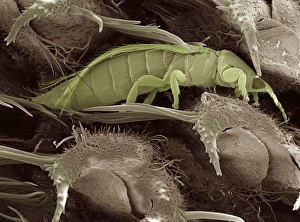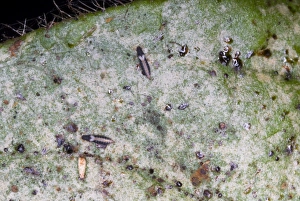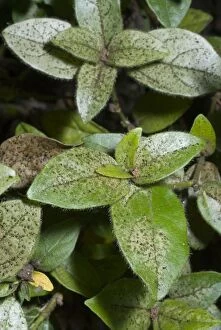Thysanoptera Collection
Thysanoptera, commonly known as thrips, are fascinating insects that often go unnoticed due to their small size
All Professionally Made to Order for Quick Shipping
Thysanoptera, commonly known as thrips, are fascinating insects that often go unnoticed due to their small size. In this false-coloured scanning electron micrograph of a thrip's head, we can see the intricate details of its compound eyes. These bulging eyes are located on either side of the head and are composed of numerous individual units called ommatidia. Sensory hairs sprout between these units, allowing the thrip to navigate its environment with precision. In nature, thrips can be found in various habitats and have diverse feeding habits. For instance, on a small scabious flower measuring just 1mm in size, three tiny Thrips from the order they are be spotted. These minuscule creatures play an essential role in pollination as they visit flowers like dandelions whose stigma is open to receive pollen for fertilization. Interestingly, some ancient specimens have been preserved in amber over time. One such example is a Thrip trapped forever within golden resin—a snapshot frozen in time. Among the different species of thrips is Aeolothrips sp. , also known as banded thrips due to distinctive markings on their bodies. Their presence showcases the incredible diversity within this insect order. Scanning electron microscopy allows us to delve even deeper into understanding these intriguing creatures. The SEM images reveal close-ups of a thrip's head and body structure—remarkable adaptations that aid them in survival and reproduction. However, it's not all beauty without consequence when it comes to these tiny insects' feeding activities. Adult thrips grazing on leaves often leave behind characteristic silvering marks due to their unique mouthparts piercing plant tissues for nutrients extraction. This phenomenon can be observed on leaves from Grahamstown in Eastern Cape, South Africa where both adult and larval stages showcase their feeding activities' impact. While easily overlooked by many observers due to their size or hidden lifestyles among plants, thrips play a significant role in ecosystems.


